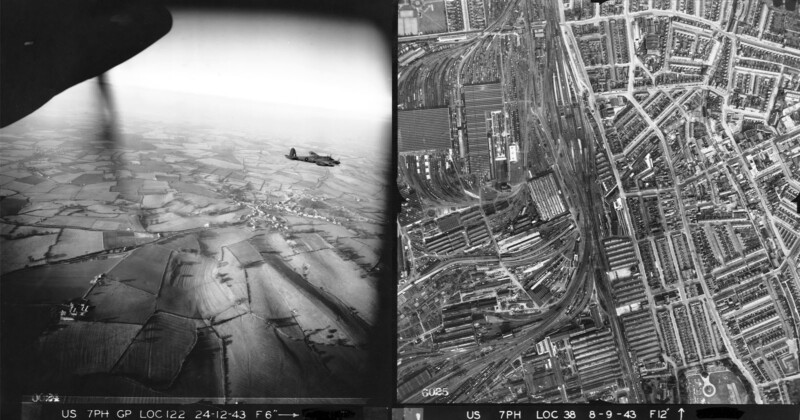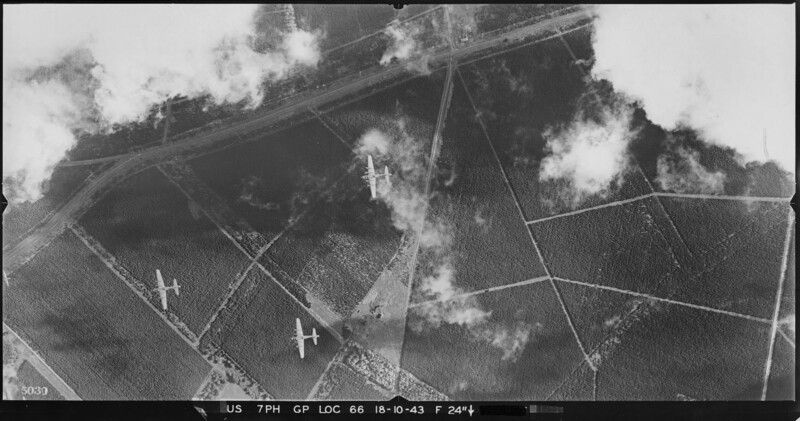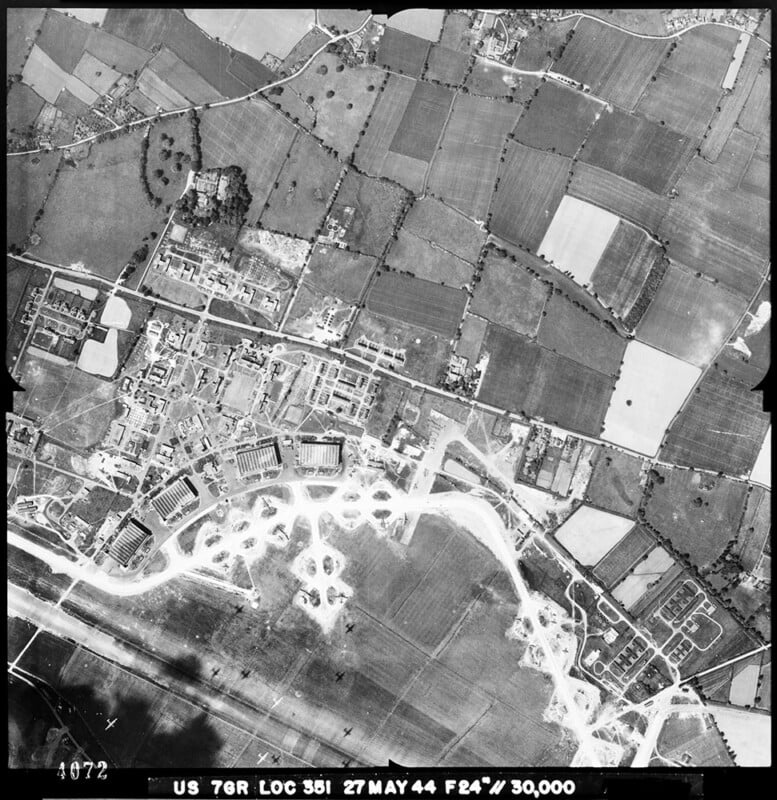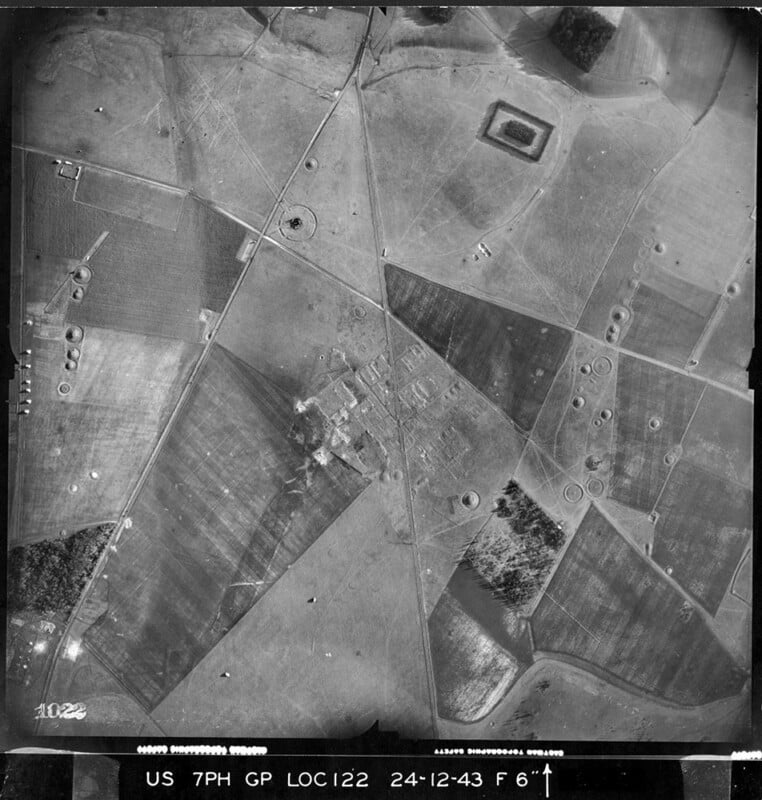US Reconnaissance Photos Taken During World War II Revealed

A collection of 3,600 aerial photographs taken by the United States Army Air Forces (USAAF) is being shown publically for the first time.
The fascinating images were taken by the Photographic Reconnaissance units of the USAAF while stationed at bases across England in 1943 and 1944.
The images show a country in a state of disrepair after the Nazi bombing campaign known as The Blitz had done severe damage to towns and cities — including to the home of Manchester United whose stadium can be seen with a huge hole in it.
Manchester United’s stadium Old Trafford (bottom right of the above photo close to the river bend) was hit by a bombing raid in March 1941 and it was not used for soccer again until 1949.
How Did the USAAF Photographic Reconnaissance Units Work?
Photographic reconnaissance (PR) units were established at airfields across England with each group consisting of specialist crews that processed film, printed photographs, and interpreted the results.
Many of the images, managed by Historic England’s, were taken by the Eighth Air Force’s 7th PR Group and the Ninth Air Force’s 10th PR Group. The 7th PR group took over three million photographs and conducted notable missions including photographing the invasion beaches ahead of D-Day which provided valuable information for the Normandy landings and Operation Overlord.

According to Historic England, RAF Mount Farm in Oxfordshire was the principal air base for USAAF PR. Pilots would practice taking photographs at high and low altitudes, sometimes using planes that had had their weapons removed to make room for cameras. USAAF PR aircraft were given numbers beginning with an “F” for “foto.”
The photographers didn’t need to lean out of cockpits to take the photos, instead, they had fixed cameras with magazines of rolls of plastic film so they could take scores of pictures. The pilot would operate it himself with a push-button control.
The cameras were fitted with different lenses depending on the target they were photographing. Generally, they would either take vertical (straight down) photos or oblique photos that captured an angled view of a target and were taken at a lower altitude.

The PR units had an important job. The chief of the German army, Colonel General Werner von Fritsch, said that the side with the most efficient photo reconnaissance would win the war.
The photographic prints measure 8 x 7 inches, 9 x 9 inches, and 19 x 9 inches. In total, Historic England’s USAAF collection totals over 20,000 prints taken by U.S. reconnaissance photographers.
One of the photos show troops bringing a slice of the USA to England by playing a game of baseball close to firing ranges.

The historic images also show anti-tank defenses surrounding ancient monuments in West Sussex and Worthing. Deep ditches and concrete cubes are laid out to thwart an enemy advance.
The collection has been made publicly available for the first time via Historic England which has created a searchable map on their website for people to browse the photos.
“Our USAAF Collection records changes taking place in England as a result of the Second World War, as well as capturing fascinating incidental detail like American troops playing baseball,” says the chief executive of Historic England Duncan Wilson.
“Our collection of USAAF wartime photographs was taken in England by the pilots and aircraft of squadrons that provided intelligence for the eventual defeat of Nazi Germany. This came at a cost, with many pilots killed in the line of duty.”
Image credits: All photos courtesy of Historic England Archive (USAAF Photography).